—HOW LONG
DO I PRACTICE
BEFORE
I BECOME?
Soft Spots
public art
2021-2022
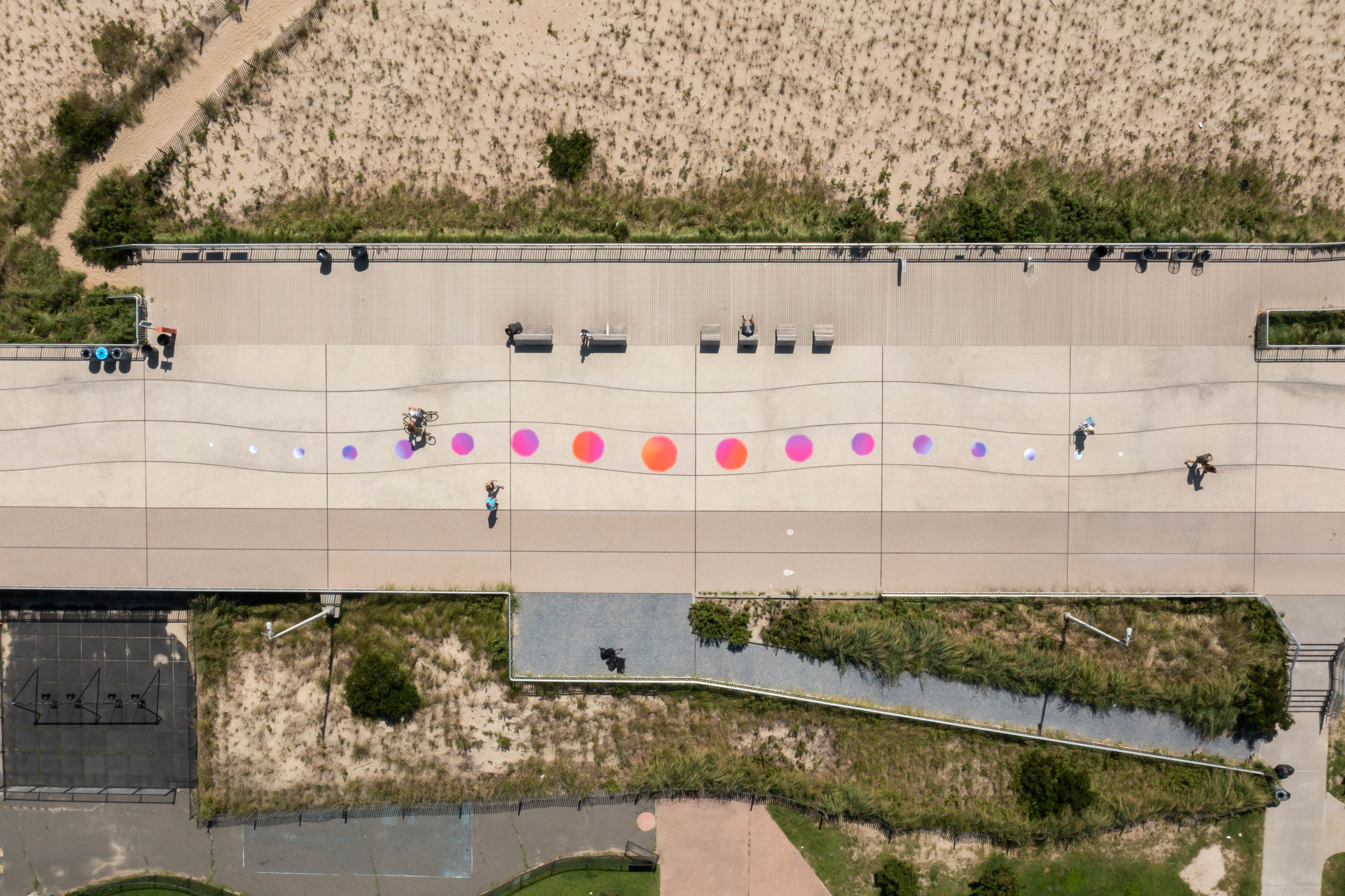
Jeff Kasper, Soft Spots at the Rockaway Beach Boardwalk, Beach 84 (2021). Photo by Ronald Weaver II.

Jeff Kasper, Soft Spots vinyl floor decal (2021).
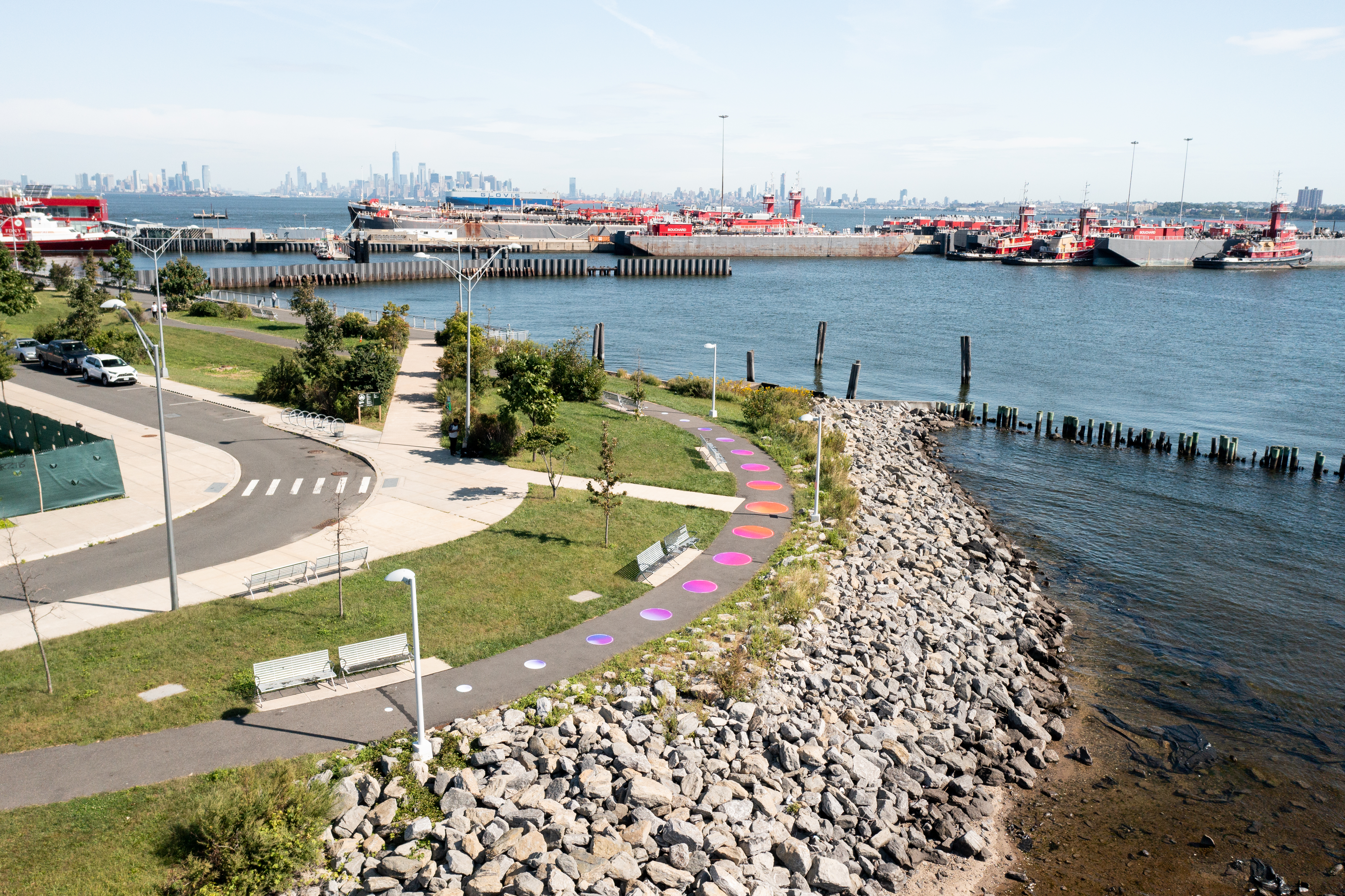
Jeff Kasper, Soft Spots at Stapleton Waterfront Park (2021). Photo by Ronald Weaver II.
—WHAT DOES SUPPORT FEEL LIKE?
Soft Spots is a brightly colored mindfulness path inspired by the playful style of self-help and mutual aid graphics that gained popularity on social media during the COVID-19 pandemic.
Subverting the language of "social distancing" signage, the text along the edge of each spot feature affirmations and questions for those seeking support and building community.
The installation is paired with a calming audio tour of guided visualizations that help to foster a sense of self-confidence and to decrease social anxiety.
Locations:
Queens location
Staten Island location
From September 1, 2021 through February 9, 2022, two iterations of Soft Spots were located in New York City at the Rockaway Beach Boardwalk in Queens, and Stapleton Waterfront Park in Staten Island.
Soft Spots was commissioned by Art-Bridge, Meta Open Arts, and We The Culture, and presented by New York City Department of Parks and Recreation (NYC Parks).
Download the press release
Listen to the audio tour:
Love Devours Time
public art
2021


Jeff Kasper, Love Devours Time at Greensboro Project Space, billboard marquee (2021). Photo by Adam Carlin.
—LOVE IS SIMPLE AND SIMPLE THINGS DEVOUR TIME
Love Devours Time was a marquee and manifesto (in five parts) on view at Greensboro Project Space in Fall 2021 as part of The City Billboard project.
LOVE DEVOURS TIME
(a manifesto in five parts)
(a manifesto in five parts)
1. Love is a choice: Love is action. We choose to love. Love cannot be forced but it can come as a surprise.
2. Love is sustainable: Love only endures when it is maintained, upheld, or defended. It is a cyclical, resource-intensive process. Love may be transferred from one closed system to another but it never ceases. Love is a commitment.
3. Love takes time: Love requires trust. Trust feeds on respect. Respect is built from time. In other words, love is simple and simple things devour time.
4. Love is presence: Love asks us to pay attention to what is happening now. Love in the past is conjured up from memories we have only reconstructed, and the future of love is made up of fantasies that we play out in our minds. The present is all we really ever have of love. That present is infinite.
5. Love is a practice: Deep listening, close looking, and attentive feeling is the recipe for love. Like any good recipe, you can’t follow the directions too closely. You must leave room for a little magic. It is all in the interpretation.
Boundary Objects
social space
2020

Image Description: Jeff Kasper, scaling vulnerability (2019). A blurry hand slides a bead along a minimal bar scale set on a black table. The location of the bead is hard to discern. Below numerous positions on the scale are words set in white: “Avoidance” “Competition” “Compromise” “Accomodation” and above, “Comfort”. At either end of the scale are the proxies “You” and “I”.
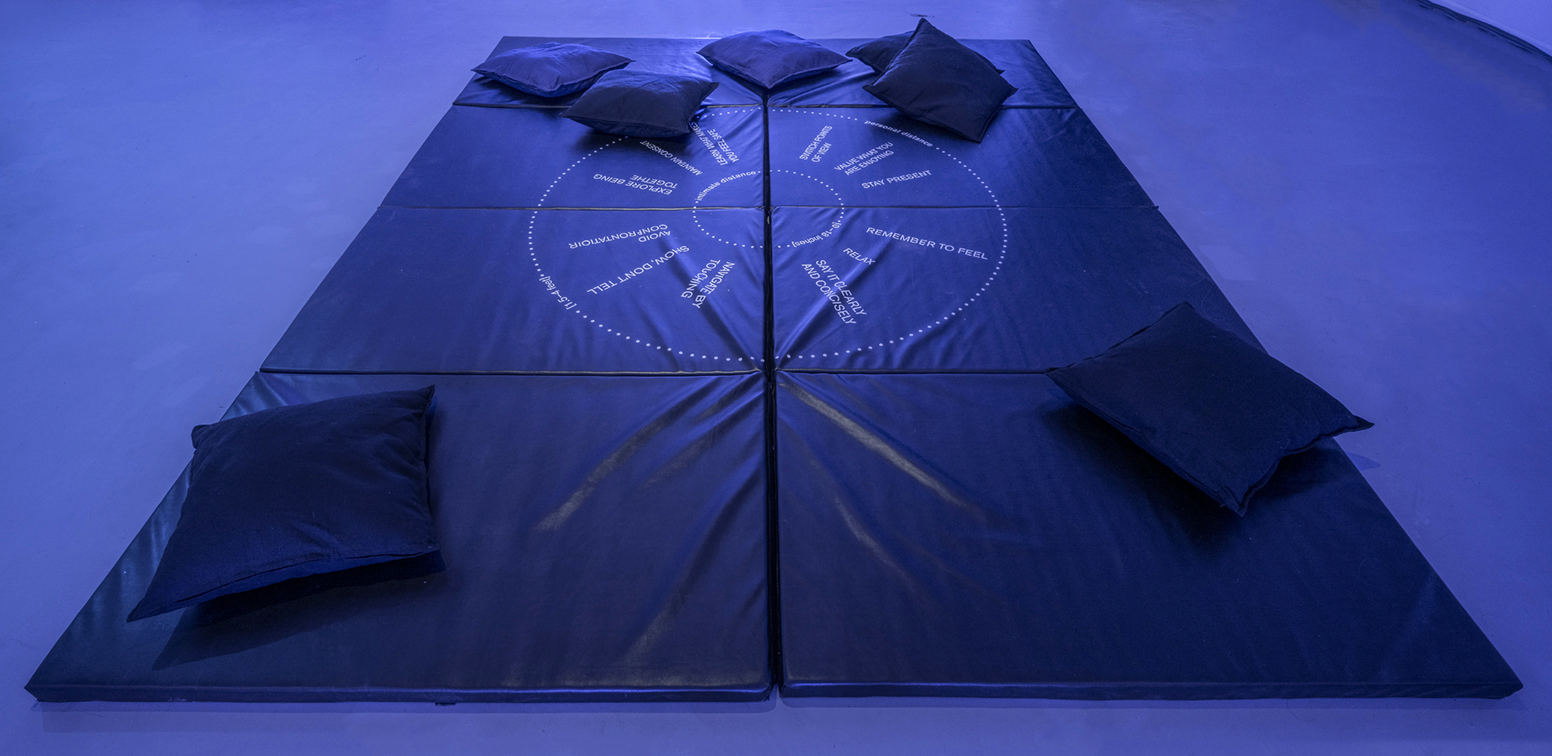
Image Description: Jeff Kasper, wrestling embrace (2020). A soft leathery black exercise mat is glazed with blue light. Strewn about are black cushions as if recently occupied. At the center of the mat is a circular graphic with numerous phrases like “navigate by touching” and “relax” that correspond to the proxemic distances of personal space and intimacy.
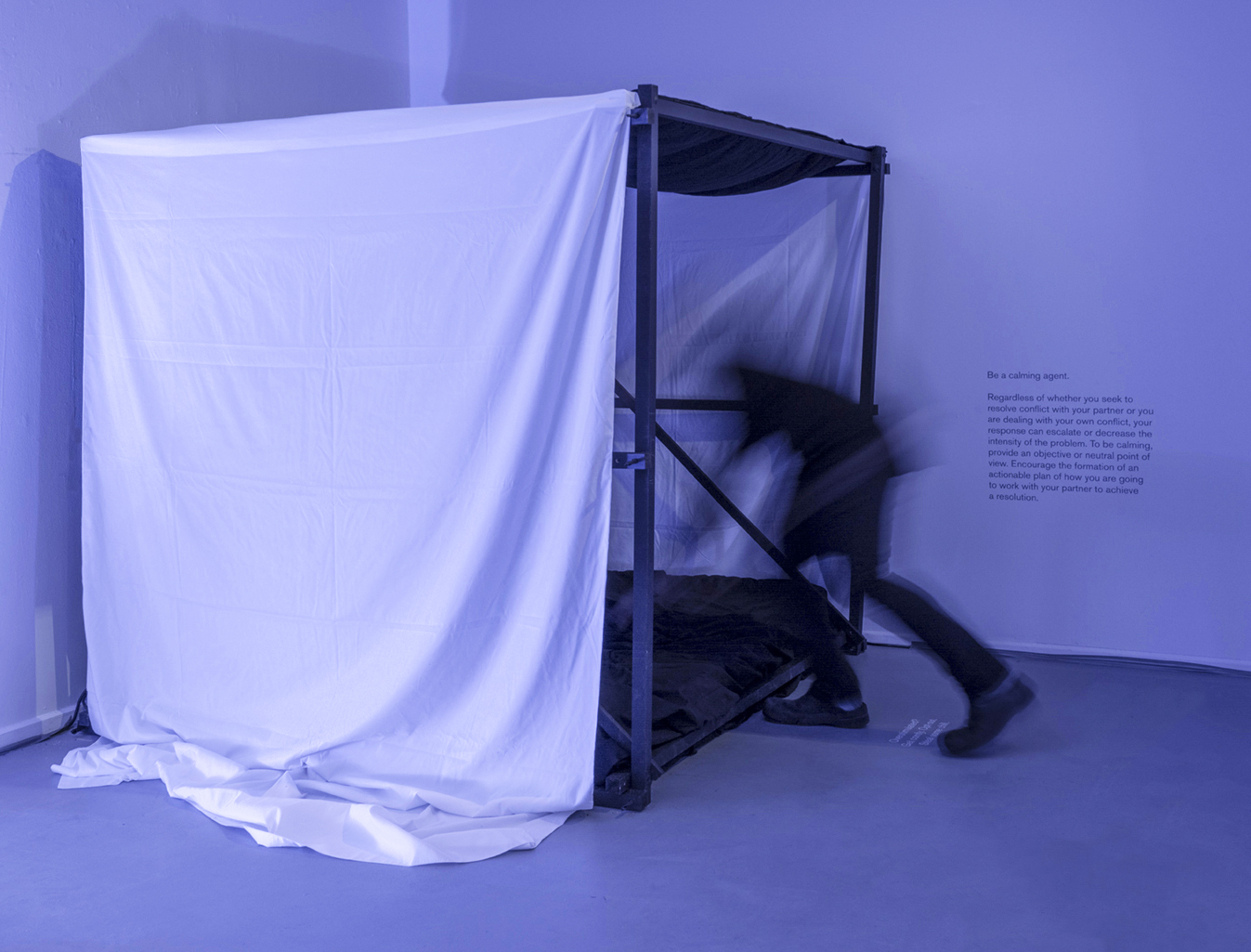
Image Description: Jeff Kasper, calm cube (2020). A blurry figure dives into the “calm cube” a daybed-like structure composed of intersecting black bars, pillows, foam cusions, and draped in white fabric. The image is softly tinted with a lavender haze. On the wall behind the figure is a text. It reads: “Be a calming agent. Regardless if you seek to resolve conflict with your partner or you are dealing with your own conflict, your response can escalate or decrease the intensity of the problem. To be calming, provide an objective or neutral point of view. Encourage the formation of an actionable plan to work together and achieve a resolution.”
—SOMEWHERE INBETWEEN COMFORT AND VULNERABILITY
Boundary Objects is a social space for navigating interpersonal boundaries.
Visitors were encouraged to use the exhibition to slow-down and practice playful choreographies of support facilitated by games and creative tools. Experiences in the space can be applied to real-world conflicts, conversations, and collective situations.
Recently exhibited at Herter Art Gallery, University of Massachusetts Amherst.
Listen to the audio guides:
Give & Take Care
social space, workshop
2019—ongoing
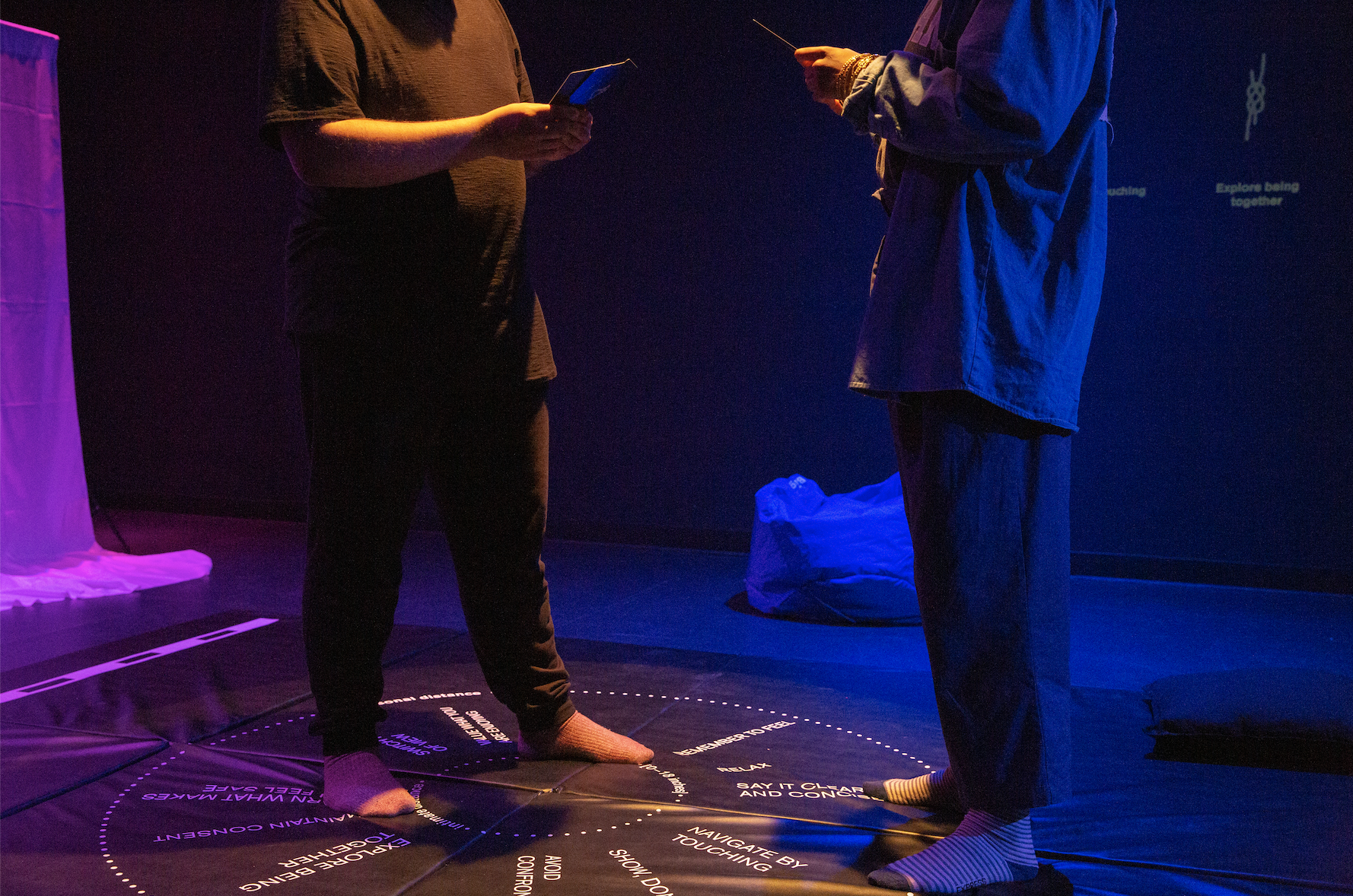

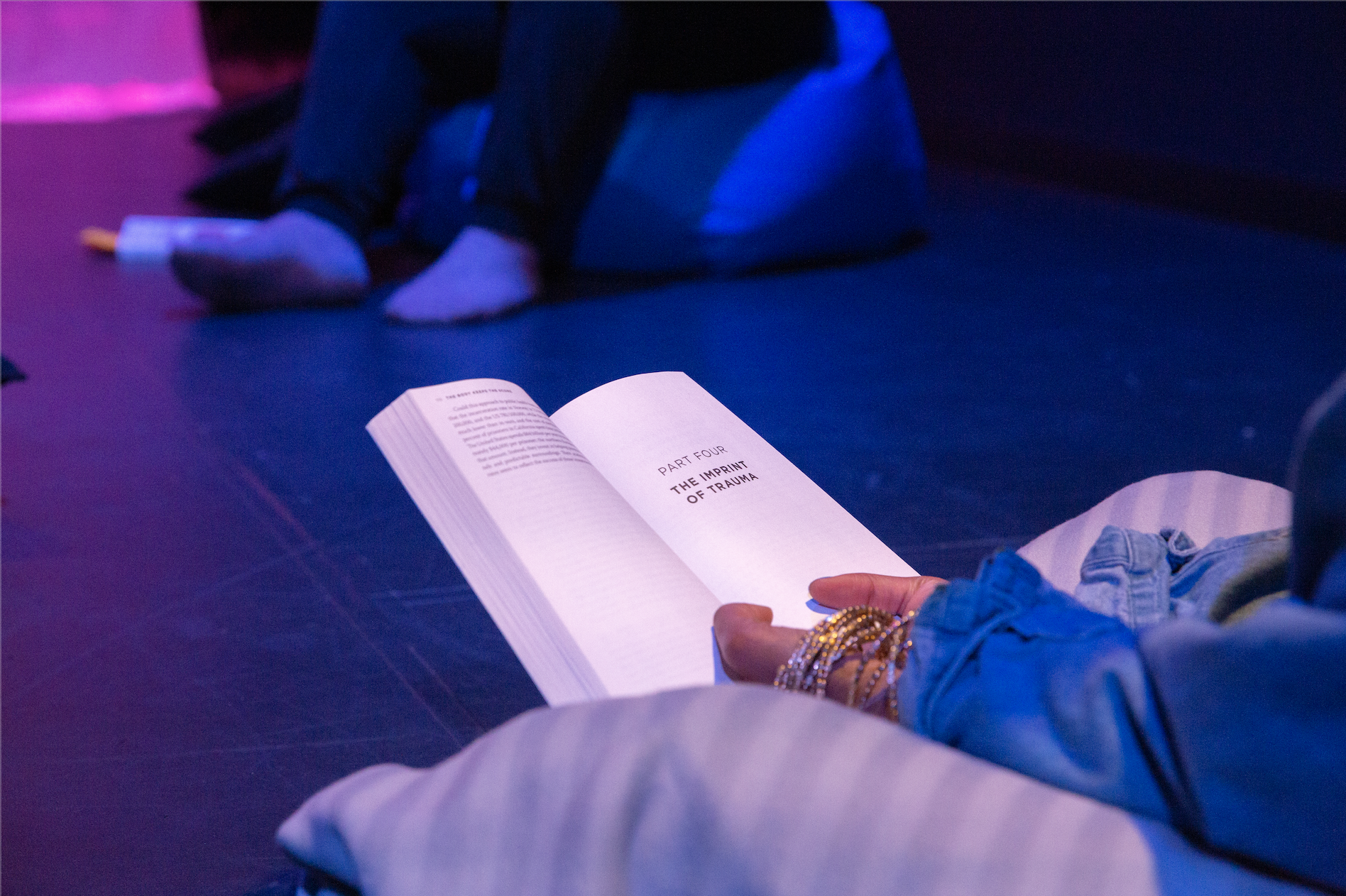

—WHAT MAKES YOU FEEL SAFE?
Give & Take Care is a social space for (re)imagining relational health.
The low-light sensory space offers time to strategize safety and consent with others. Accompanying programs are co-designed with participants and guest organizers to offer context specific tools for exploring care, conflict, and accountability. Visitors are encouraged to bring a partner, friend, accomplice, or feel free to participate solo in the many lounges for play, napping, nervous system health, and reading.
Give & Take Care features a non-circulating library on contamplative arts, queer sexuality, and disability culture.
Recent interations:
University of Massachusetts (2020)
Downtown Art (2019)